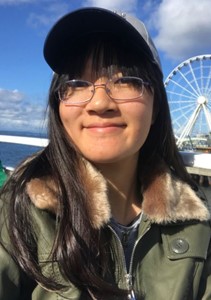Min-Hua Tsou

- Kapolei, HI
- Mililani High School
Min-Hua was determined to find an environmentally viable alternative to conventional treatments that can remove heavy metals and toxic organic compounds from wastewater while utilizing its nutrients for the production of valuable biofuels. After countless hours of trials and experiments, Min-Hua found out that mass microalgae culture in wastewater offers an alternative tertiary biotreatment along with the production of potentially valuable biofuels. She spent days after school synthesizing and testing different nanoparticle solutions in the laboratory to engineer a system that placed spheroidal silver nanoparticles around microalgal culture flasks to increase the the formation of photopigments in algal cells using the backscattering in the spectral regions favorable for microalgal growth.
Through countless hours of trying and retrying, Min-Hua faced multiple errors and challenges, inconsistent results, experimental errors, and calculation problems that seemed impossible to understand. But nonetheless, each problem that she encountered, she met with open arms. Eventually, Min-Hua's algal wastewater system was able to clean the wastewater 4 times better than the current system. Not only was her system able to clean the wastewater, it was also able to mass produce sustainable algal biofuels. In the end, her system offered a sustainable way to clean wastewater while producing useful biofuels- a step towards a cleaner and healthier Earth.